#WinFry
Explore tagged Tumblr posts
Note
please tell us more about winnie and fry i'm so happy to see someone self-ship with him!!! he is sooo adorable and deserves someone who loves him 🥺
AWWW OF COURSE ANON❣️
Nicknames for Him: Honey, Doc, Dear
Nicknames for Me: Pumpkin, Sweetie, Dearest, Dear, Kitten
Winnie will legitimately sometimes forget that Mark comes from a wealthy family until she’s reminded. Like the first time she went to his estate she was like “Ho ho Holy Shit!”
Fry likes to give Winnie gifts. Jewelry, nice, clothes, stuffed animals, little antiques and trinkets that she expressed interest in. He insists that it’s no bother at all since he has so much money, but Winnie still feels guilty and like he’s spoiling her more than she’s earned since she comes from a pretty modest middle class family.
Winnie likes to give Mark lots of affirmation and reassurance. Winnie wants him to know how much she loves and appreciates him and it always causes him to short circuit a little because he is Not Used To receiving recognition and appreciation. Winnie’s also super duper cuddly and loves giving and receiving physical affection.
Winnie’s a very affectionate person in general, so it feels great that she’s with a kindred spirit that she can lay all her love on without feeling like she’s being too much.
If Mrs. Tweedy is mad/lashing out at Fry, Winnie will step in to redirect and take the heat instead. Mark is both incredibly touched and incredibly worried by this, since he doesn’t want Winnie to get hurt.
They have to sneak around a lot in the beginning since Fry’s still married to Melisha.
Most of their dates are either in Winnie’s hotel room or somewhere private on one of Fry’s properties
They wish they had more opportunities to be together without the fear of getting caught
WinFry is Autistic4Autistic and they love info dumping to each other!!
Aaand that’s all of got for now! Thank you so much for giving me the chance to ramble Anon! 💞
3 notes
·
View notes
Text

Most upsetting part about all this is that, in spite of my DR origins, Kork didn't even cross my mind her until i finished picking a color scheme, took a step back and went "Oh. Oh no"
#on a good note Catherine despises her sister with every cell of her body#so i think no incest makes her better than Korekiyo by default❤️#also this just proves that i would find Kork incredibly attractive if he wa a woman so. there's that too i guess#hyena scribbles#fear and hunger oc#termina oc#termina 1st round#Catherine winfried#not what I'm called#meme#shitpost
35 notes
·
View notes
Text
The mindset regarding Thomas Astruc appears to be that he's the end-all-be-all for Miraculous.
His thoughts and tweets are given so much weight, often distorted through a loooooooot of disingenuous reads. Except... what about everyone else on the staff.
Sebastien Thibaudeau is the story editor of the show and has written for most episodes so far.
Nathanael Bronn? He's a co-writer of the story bible, has a finger in near every pie, is considered a co-creator along with Astruc.
Wilfried Pain? Co-director along with Astruc for most episodes and clearly having a say in where things go.
Jeramy Zag? One of the composers for the theme songs, some of the transformation themes, CEO of Zag and screenwriter of the movie.
Then there are the companies and distributors involved. Less personal but no less have a knock on effect on the show's presentation.
So why are we giving the yapper on Twitter all of the onus for what the show does or doesn't do?
I think this is something of an Authorial Intent situation where we heap all of the adoration or derision upon the creator as if they are some indie web comic artist. Because acknowledging the vast, vast creative team and the corporate overlords takes a lot more work compared to just one person. Far less overwhelming.
This is aided when they have a Social Media prescence. Far more easy to heap everything on a human lightening rod for the voltage that is our anger.
A similar example would be that of Rebecca Sugar with Steven Universe a few infamous critics and fans alike really tried to blame her for every pet peeve they had with the show. Some, not naming names, went so far as to call her a Nazi just because the big bads were allowed to turn themselves around.
Man, don't tell that crowd about the Chloe stans...
But even if to accurately ascribe blame, why can't we put that energy to looking into others on the Miraculous creative team? Reach out to them more if at all possible. Figure out who exactly is responsible for what's got the fandom's goat this time around?
Just... anything other than "Mommy! Tommy's being mean again!"
Thomas Astruc is only as maddening as you allow him to be. And he's not even THAT bad. He's snippy at worst, opinionated at best. Good knows I wish that was the only thing bad about JK Rowling again.
So yeah, I have bone to pick with theimmaturityofthomasastruc blog for enabling this lack of curisoity.
#thomas astruc salt#in that i'm salty thomas astruc gets all the salt#miraculous ladybug#miraculous salt#in that we don't apply the salt properly#winfried pain#miraculous#miraculous lb#miraculous tales of ladybug and chat noir#ladybug#chat noir#ladybug and chat noir#marinette dupain cheng#jeremy zag#zagtoon#zag heroez#mlb#mlb fandom#miraculous fandom#adrien agreste#cartoons#animation#salt#2d animation#disney#disney channel
47 notes
·
View notes
Text


Winfried Nerdinger undoubtedly is one of Germany’s most distinguished architectural historians: between 1986 and 2012 he was professor of architectural history at TU München and with his trenchant contributions had a major impact on the discourses surrounding the Bauhaus and National-Socialism, the architectural and political history of Munich or the architecture of Nazi Germany and how to deal with it as built heritage of a grim past. In recent years Nerdinger also involved himself in the hard-fought discussions in the context of reconstruction in general and the reconstruction of buildings like the Berlin Palace in particular.
This year Nerdinger celebrated his 80th birthday, at welcome occasion to look back at past and present discourses in the form of a collection of essays: edited by Wilhelm Vossenkuhl and recently published by Prestel „Recherchen Reflexionen Positionen“ collects fourteen essential essays by Winfried Nerdinger in which he deals with his primary research topics.
And already in the first four essays the recalcitrant spirit of Nerdinger emerges: in the late 1970s and mid 1980s he was responsible for two exhibitions dealing with the Munich after the First and Second World War with which he recollected the council republic and its brutal suppression as well as the personnel continuities in the city’s planning and building administration before and after the Nazi era. His disclosures were met with fierce opposition and personal attacks.
Another sacrosanct topic with which Nerdinger provoked opposition is the Bauhaus and the legends surrounding it. Again, he brought up the painful subject of the continued existence of Bauhaus ideas in the Nazi era. Nerdinger convincingly demonstrates how the school’s ideas and design principles, and thus also its graduates and former students, were largely detached from society and thus compatible with almost any social system.
On a more recent note, Nerdinger interferes in the heated debates surrounding architectural reconstruction and pleads for more objectivity and less ideology: in a long essay he follows the thousands of years old tradition of reconstruction as a form of historic continuity. From the ancient world to the decades after the Second World War reconstruction was an effort legitimized by citizens and/or politicians and for the most part served as a means to strengthen identity and identification. On the other hand, many reconstruction projects hark back to private and not at all democratic initiatives, a circumstance that explains much of the opposition.
In view of the very insightful and at times bold essays collected in the book it doesn’t surprise that Winfried Nerdinger still is one of the most important voices of German architectural history. A highly recommended read!
#winfried nerdinger#architectural history#prestel#architecture book#essay collection#art history#german architecture#book
18 notes
·
View notes
Text
hey folks it's my dad's birthday today. my dad died this past april so it's the first year i'm celebrating without him.
he loved the appalachian trail so if you feel so inclined, please donate in his honor. thank you
here is an animation i made for him for the last birthday we will ever celebrate together.
it depicts the housatonic river from where we'd always sit and watch it pass by on our annual hikes up the appalachian trail. the audio is a recording of the river i took while dad was at my side.
soon his ashes will be spread a mile and a half away from this river at silverhill campsite, our favorite place to stay when we backpacked along the trail.
happy birthday dad <3
i wish you could've made it to 67 and more. love you forever pops, rest well <3333
youtube
#art#creatures#phenomenon#love things#for winfry#mothers tag#my art#my artwork#my art <3#my artwrok#animation#2d animation#housatonic river#housatonic#river#appalachian trail#grief#for dad#love you dad#grieving#parental loss#parental grieving#digital art#water#Youtube
5 notes
·
View notes
Text
Evil Kindness
You were born into a cruel world. People will hurt others and themselves, just for a morsel of meat. A world of old gods and cults, and a world of simple and unending cruelty.
It's no surprise you ended up as you did.
-----
Catherine Winfried, an OC made by laugtherhyena, was created for the Fear and Hunger universe. That much is obvious knowledge, I am well aware-- as is everything I state in the following article.
Born as the daughter of man who knew no loyalty, only his own desires. Born a bastard, and born to be despised.
She was born with no power, which will only ever cause a yearning for it. Something similar is written in the introduction of the 2017 copy of The Handmaid's Tale by Margaret Atwood. "Yes, they will gladly take positions of power over other women---and, possibly, especially--- in systems in which women as a whole have scant power; all power is relative, and in tough times any amount is seen as better than none."(Page XVI)
This lack of power sprouted from being born as a result of control over one's desires--- or, more accurately, lack thereof. Perhaps this could be attributed to the old god Sylvian, perhaps the man could claim his actions as a way of honoring her.
But that is simply not the case, especially seeing as he didn't participate in a marriage of flesh. Neither he, nor his wife, worshipped the goddess in such a way. They were mere mortals, living there life seemingly cult-free. Mortals who, nonetheless, were as cruel as gods who seemingly abandoned them. Perhaps Gro-goroth, destruction embodied, is the god in which they worshipped.
However, what is known is that there is knowledge of Alll-mer. Be it from worship or something else is unknown.
This comes into play later in Catherine's life, however. As her family is still the primary focus.
They took things she never realized she wanted until it led to her suffering from dysmorphia, and they took things she knew she did just for the joy of it. She was not born with a skeletal frame, nor those scars, after all. She was the tortured, the beaten, the bruised. She was the laughing stock, the punching bag, and the servant.
She was not born to be one's daughter, she was born to be one's slave. Her life was never meant to have any meaning beyond that.
But one could say it had a plus side, at least for her. Learning medical knowledge to heal herself. She had no choice, but it gave her something to do other than feel sorry for herself.
Which drives back to the topic of power. Her sister was stabbed by a thief. And what better way to get power than to be kind? Than to heal?
Kindness is never seen as inherently evil, nor is healing. Both come from a good heart, at least stereotypically. Why would someone show acts of kindness to those who hurt them beyond repair, if not because their heart was good?
The answer is simple. To heal is a form of power, the same goes for kindness. But Catherine needs not compliments to make others trust her-- as the medical knowledge she provides, the work she does to aid others, is all the kindness that is needed to gain her own twisted little power.
After all, when human life, a fragile thing, falls into the hands of the tormented... Well, what can be expected to happen?
"All power is relative."
There's that quote again. But it applies here, too.
The moment she healed the person who damaged her face, the moment she healed one of the many who made her life a living hell, she gained a power over her. A sick and twisted power akin to a life debt. If Catherine desired something, she could most certainly use the life she saved to get it-- she is owed that much.
And, sure, while she'd never do it... with enough medical knowledge, you can make any death look like an accident.
Even with that life debt, and the kindness that came to it, she was never a daughter, nor was she ever the recipient of an apology. But what did it matter? She carried both life and death on her hands, like a god of sorts, and that power is always something to get drunk on. Especially when it leads to paths towards more of it.
Catherine Winfried became that kind of cruel, cruel, woman. That is what one's surroundings does. Perhaps if she had loving parents or a loving sister, she would have been kind and selfless, but the heartless reality made her cold and selfish.
But, at the same time, she is kind. In a world of cannibalism and sex cults and awful, awful, beings, she is something of a saint... in a way. As her service only comes with one charge, and that is giving her power. But that's never something her patients will realize, at least not until it is too late.
That is the kind of woman she is. A strange, strange, woman. She is not kind, she is not empathetic, but at the same time she is not unkind or apathetic.
What she is, however, is power-hungry.
#catherine winfried#fear and hunger oc#Not my oc ofc#What is this? an essay? an analysis? just my thoughts? who knows at this point. not me im surviving off of a donut and some coffee.#<- person who knows next to nothing about fear and hunger#<- person who has two jobs and no time to get into new interests
5 notes
·
View notes
Text










Winfried Kretschmann.
19 notes
·
View notes
Text


Trans Sitzend [Trans Sitting]
Gabriele Stötzer, East Germany, 1983-1984
4 notes
·
View notes
Text







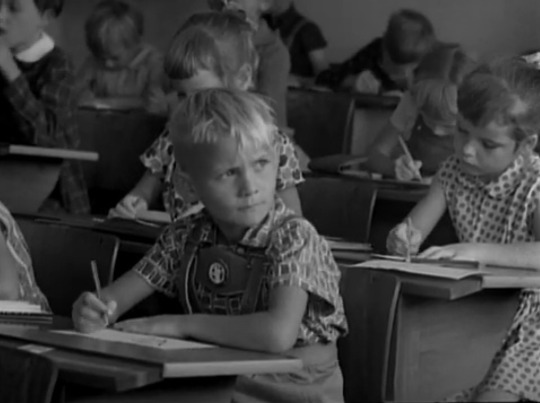

die kinder von golzow: wenn ich erst zur schule geh'... , barbara und winfried junge 1961
#die kinder von golzow#wenn ich erst zur schule geh'#barbara junge#winfried junge#documentary#defa#1961#im 6. stock#about photography
3 notes
·
View notes
Text
Since the theory of signs is a language of its own and thus a system of signs itself, this theory should ideally be applicable to itself, being able to analyze the very system of signs used for the investigation of signs. In the discovery of this self-reflexivity of semiotics, there has been surprising alliance between the otherwise antipodean semioticians Morris and Kristeva. Morris describes semiotics as being both a science and an instrument of the sciences, a metascience and a "science coordinate with the other sciences" (1938: 2; Morris 2.1.3). Kristeva discovers this self-reflexivity when she describes semiotics as being both a metalanguage (being a "science of the text") and an object language (being a "signifying practice" like other languages). More recently, in the context of mathematics and logic, Hofstadter has characterized this type of antinomy as "bootstrapping," the necessity of having to lift oneself by one's own bootstraps (1980: 24). Kristeva's proposal for an escape from this antinomy was to turn semiotics into ''an open path of research, a constant critique referring to itself in autocriticism."
Winfried Nöth, Handbook of Semiotics
11 notes
·
View notes
Text
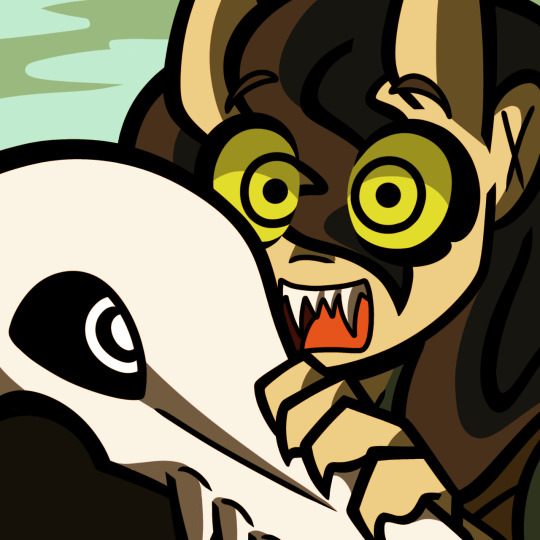
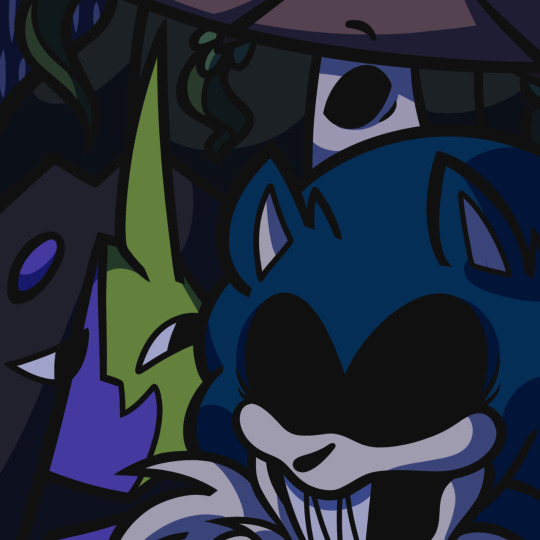
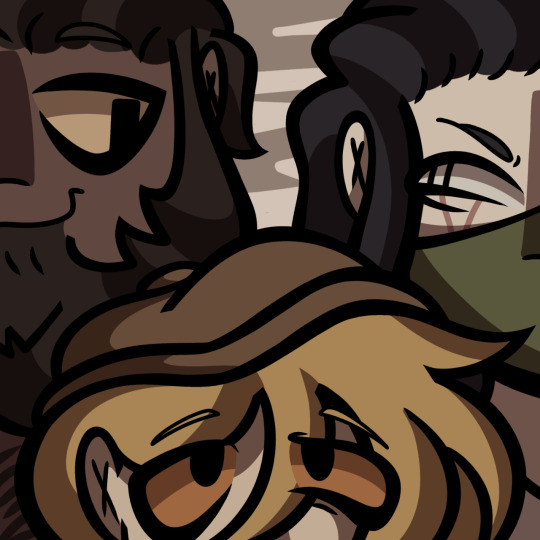
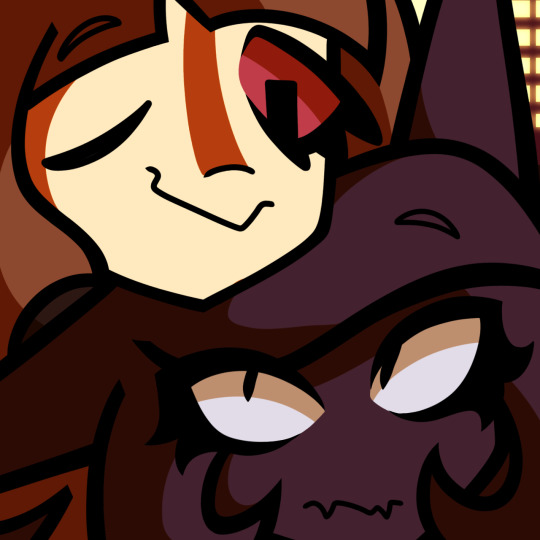
Prep for artfight by making character refs ❌ Prep for artfight by making silly character icons so i can shove as many as possible in my team card ☑️☑️☑️☑️☑️
So yeah! As y'all can probably guess, these people and especially Akibeni are my preferences this year :] but don't feel obligated to draw one of them, i got a lot more characters in my page and I'll be just as happy to get art of them as well!
#Akira and Beni's drawing was meant to be one of those icon thingys too#but i got carried away ❤️ i love them too much#i had a lot of fun drawing these too! since both icons and these kinds of crammed pics are something i never do#the only one i don't like all that much is the funger one (💔) but i still think it looks pretty good#i just like the other ones a lot#hard to pick a favorite between Cherry and Mackerel or the horrors + Fighter#I do think the horrors one is funnier because they're just the leftover random character i want art of#since Cherry and Mack are like. representing my Csm and Dunmeshi ocs there#then we have a goddamn Sonic.exe. an oc from a roblox game and a deranged little violent creature#i should draw them together again ngl#hyena scribbles#artfight#artfight 2025#Csm oc#Cherry#dunmeshi oc#Mackerel#The mimic book 2#Hoshiro#Ena oc#Fighter Ena#Sonic.Exe#Hero.Exe#Termina 1st round#John Eberwein#Mary Ann#Cathetine Winfried#Skullgirls oc#Stuck together
18 notes
·
View notes
Text

Daan Lennard Liebrenz and Winfried Glatzeder in Dark (2017) Vom Suchen und Finden/Lost and Found
S2E5
In 1987, Ulrich seizes an opportunity. The kids return to the cave with the time machine, and Jonas learns of a loophole that could change the future.
*The Stranger (Jonas) carries a necklace with a medal of Saint Christopher. Legend says that he carried a child, who was unknown to him, across a river before the child revealed himself as Christ. Therefore, he is the patron saint of travelers.
#Dark#Dark tv series#2017#2019 episode#Vom Suchen und Finden#Lost and Found#1987#Daan Lennard Liebrenz#Winfried Glatzeder#time travel#cave#time machine#Ulrich#meeting#father and son#the future#German#dark matter#drama#mystery#crime#scifi#thriller#just rewatched#hug
2 notes
·
View notes
Text
me: i need something new, huh looks like manta has that manhwa that everyone says is insane, I do like weird gothic shit so let's go
me ten chapters in: this author read a song of ice and fire and replicated the lannister kids in a new way that is somehow equally fucked up jfc
#like there's magic involved and a devil but that's cersei jaime and tyrion right there. i know what my kiddos look like#(i say as if I'm not the twins' age)#cersei if she was more cowed and more afraid of herself#tyrion if he wasn't a dwarf and came by his hedonism honestly and then sent to the citadel#and jaime if he were... a little smarter lmao#but the dynamics are eerily similar#the anette-winfried dynamic so far is exactly what would have happened if tyrion wasn't a dwarf and joanna didn't die. it's bonkers#like they still dislike each other but it's colored differently. same outlines different color choices#besides the obvious twincest setup there's a resentment between anette and winfried over john that is so... lannister sibs core
5 notes
·
View notes
Text
it is IMPERATIVE that you continue to make your strange little noises
#just thots#autism#oc#rewcana rambles#autistic#weirdcore#weird girl#weirdo#u must be weird in public#weird boy#weird thing#creatures#phenomenon#humans#love things#mothers tag#for winfry
19 notes
·
View notes
Text


Bild- und Rechtswissenschaft
1.
Winfried Bullinger: Nüchtern angewandte Bild- und Rechtswissenschaft, die nicht von selbst ins Anthropologische ausschlägt, sondern durch Registrierung und Formatierung, also durch Kulturtechniken, die Bullinger durch weitreichende Routinen, Fleiß, Talent und gründliche Vorbereitung beherrscht. Er selbst nennt das Vorgehen schlicht Stringenz, gut gesagt.
Sind Winfried Bullingers gründliche Register schon Klassifizierungen, Sortierung oder Kategorisierungen? Sammlungen sind's, und die haben bei ihm ein Sagen, keine Botschaft. Das Verfahren der Registrierung und Formatierung bestimmt das Bild, insoweit hat das Sammeln das Sagen. Und es bleibt was Sagenhaftes im Verfahren, es lässt den Bildern ihren Raum entwickeln, von mir aus Spielraum.
Bullinger zeigt zweierlei: Etwas, das begrifflich mit Behausung und Architektur (also in und mit Spannbreite) eingefangen werden sollte. Er zeigt insoweit mehr oder weniger nomadische, mehr oder weniger stabile/unbeständige Stätte [sic]. Zweitens zeigt er Menschen, die ebenfalls mehr oder weniger stabil/unbeständig einen Platz an einem Ort mit Anspruch auf Welt einnehmen und die auf den Fotos leicht (auf ungesicherte Weise) an Gebärden oder Posen geraten. Sie halten sich, manche wollen wohl auch Haltung.
Immer gibt es bei Bullingers Bildnissen einen dichten Kontakt zwischen Blick und Bild, eine intensive Beziehung zwischen dem Menschen und dem Apparat, den Bullinger nach Ostafrika mitschleppt, um Menschenbilder einzufangen. Bullinger beschreibt seine Aufnahmen unter anderem als Aufnahmen von Rändern der Macht. Neben der großen Sorgfalt und Disziplin, die er auf seine Arbeit verwendet ist es vor allem die strenge und fokussierte Zweiteilung, die mich an seinem Werk fesselt.
2.
Quid est roma? Contubernium romanorum: Mit dieser kurzen verwaltungsrechtlichen Formel aus dem stöbernden Material der notitia dignitatum, die den Menschen über unbeständig zusammenhaltende Stätten und diese Stätten über Bewohner ,oder (in einem schwachen, niederen Sinne) 'Statthalter' erfasst kann man auch noch Bullingers Zweiteilung beschreiben. Diese 'Statthalter' vertreten keinen Souverän, aber im niedrigen und schwachen Sinne sind sie, was sie sind und bleiben leicht verwechselbar mit dem, was sie nicht sind. Diese unsouveränen Statthalter halten kooperativ in einer Stätte, also mit ihr, und unsicher ist, wie weit das reflexiv, transitiv, transgressiv ist.
Für die Übersetzbarkeit in römische Formeln, Fragen und Antworten sorgt Bullinger unter anderem dadurch, dass er am Exotischen nicht interessiert ist und es, wenn es ihm einmal in den Aufnahmeprozeß gerät, nicht zum Bildnis oder Bild durchdringen lässt. Gut, da steht eine Frau mit einer Waffe, aber Bullinger würde sie so auch fotografieren, wenn die Waffe eine Handtasche wäre. Der Mensch und die Behausung, die Stätte und das Halten darin, also dasjenige was über Posen, Gesten und Gebärden manchen anspruchvollen Leuten gleich auch Haltung sein soll, obschon es doch zuerst und zuletzt vorübergehendes Halten ist, das bezieht Bullinger dicht aufeinander. Wie die Stätten auf seinen Bildern nicht den Hebel umlegen und Städte werden, so legen die Menschen hier den Hebel nicht um und lassen ihr Halten zur Haltung werden. Und dass alles passiert in der Stringenz, in einer stengen Formatierung der Bilder und Bildnisse, in der alles Methode und Verfahren ist. Das ist einer der Punkte, aus denen Bullingers Arbeiten ihre Spannung beziehen. Dass man nicht weiß, wozu und wo überhaupt diese Bilder und Bildnisse zu hängen seien, das spricht für sie.
Er bisserl römisch-katholisch könnte er schon sein, der Bullinger Winfried, einen gewisses Ergänzungswünschen scheint er zu haben. [Jetzt kommt was Uninteressantes, ich will es aber sagen:] Ich find's super.
3.
Rechtswissenschaft ist unter anderem ein Studium für die halb- bis vierfünftel Begabten und diejenigen, die was können, ihr Können aber nicht an ihre Fragestellung anschließen und vielleicht auch darum aus beidem keinen Beruf entwickeln, dafür aber jenes Geschäft ergreifen, in dem man fremder Leute Angelegenheiten ergreiftund zu übernehmen behauptet (was seltsamerweise auch als Beruf durchgeht).
Man findet also viele malende, musizierende, bastelnde und reimende Juristen. Bullinger verknüpft seine Begabung mit seiner Fragestellung (jener Fragestellung, von der jeder Mensch jeweils nur eine, ganz selten mal zwei hat und die im Satz ausformuliert eher fade erscheint). Gleichzeitig hält er seine Tätigkeiten auseinander. Kein Tag und Nacht ohne Linien, keine Linien ohne Wellen, keine Wellen ohne Kippen: Mal ist Bullinger einer der Anwälte, die man Topanwälte nennt, dann arbeitet er in Berlin bei CMS. Dann arbeitet er in Ostafrika und macht dort erstens Bildnisse, zweitens Bilder.
An denjenigen Max-Planck-Instituten, die zum Recht arbeiten, kristallisieren sich langsam, sehr langsam, Ideen, eine Ausstellung zum Recht zu machen. Wenn man das macht, soll man es richtig machen. Das heißt zum einen, zu versuchen, den Stricken und Fallen einer Propaganda zu entgehen, wie sie sich beim Aufbau des Forums Justiz in vertrauten Mustern der staatlich geförderten und anerkannten Staatsferne zeigen. Zum anderen ist man schnell mit dem Geheuer ambitioniertes Hobby konfrontiert, mit Juristen, die irgendwas im Umfeld von Gesetz und Gewalt rechtfertigen oder ihm die Rechtfertigung verweigern und danach in gymnastischen Übungen so Leinwände streicheln, wie andere Golf spielen oder schwimmen gehen. Die Dilletantische wird begrüßt, wenn es denn dezidiert anti-akademisch, also mit Spitzen daherkommt: aber: der Maßstab kann nur die Frage sein: Schließen sie das, was sie können, an ihre Fragestellung an (an jenes Stückchen Bewegung, das man auch als Treiben und von mir aus auch als Triebfeder beschreiben kann) und von dem jeder Mensch wie gesagt jeweils nur eine, ganz selten mal zwei hat.
3 notes
·
View notes
Text
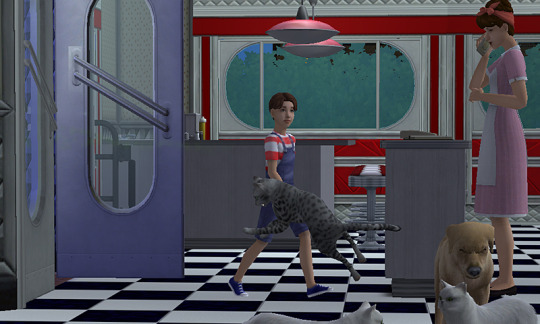




"Please send animal control. It's an emergency!"
#old pleasant valley#sims 2 gameplay#Fröhlich#John Fröhlich#Bernd Fröhlich#Winfried von Spinnweb#Marco Junggesell#Davis Traumtänzer#Fred Blank#Gerhard Landgraab#OPV:Sommer1#ts2
2 notes
·
View notes